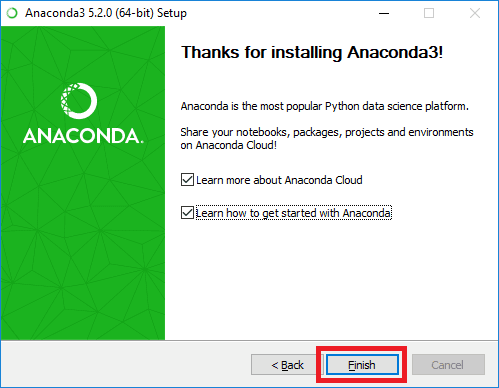

the user may wish to have TensorFlow version 2,0 or higher), works out how to install a compatible set of dependencies, and shows a warning if this cannot be done.

In contrast, conda analyses the current environment including everything currently installed, and, together with any version limitations specified (e.g. While pip has since implemented consistent dependency resolution, this difference accounts for a historical differentiation of the conda package manager. In some cases, the package would appear to work but produce different results in detail. Because of this, a user with a working installation of, for example, TensorFlow, could find that it stopped working having used pip to install a different package that requires a different version of the dependent numpy library than the one used by TensorFlow.

It would install a package and any of its dependencies regardless of the state of the existing installation. The big difference between conda and the pip package manager is in how package dependencies are managed, which is a significant challenge for Python data science and the reason conda exists.īefore version 20.3, when pip installed a package, it automatically installed any dependent Python packages without checking if these conflict with previously installed packages. It also includes a GUI, Anaconda Navigator, as a graphical alternative to the command-line interface (CLI). Overview Īnaconda distribution comes with over 250 packages automatically installed, and over 7,500 additional open-source packages can be installed from PyPI as well as the conda package and virtual environment manager. There is also a small, bootstrap version of Anaconda called Miniconda, which includes only conda, Python, the packages they depend on, and a small number of other packages. This package manager was spun out as a separate open-source package as it ended up being useful on its own and for things other than Python. Package versions in Anaconda are managed by the package management system conda. product, it is also known as Anaconda Distribution or Anaconda Individual Edition, while other products from the company are Anaconda Team Edition and Anaconda Enterprise Edition, neither of which are free. It is developed and maintained by Anaconda, Inc., which was founded by Peter Wang and Travis Oliphant in 2012. The distribution includes data-science packages suitable for Windows, Linux, and macOS.
#ANACONDA NAVIGATORFOR WINDOWS 11 SOFTWARE#
Programming language, machine learning, data scienceįreemium (Miniconda and the Individual Edition are free software, but the other editions are software as a service) Īnaconda is a distribution of the Python and R programming languages for scientific computing ( data science, machine learning applications, large-scale data processing, predictive analytics, etc.), that aims to simplify package management and deployment.


 0 kommentar(er)
0 kommentar(er)
